Dr Nina Purvis is a British medical doctor (MD) and astronaut health researcher, currently spending 13 months at Concordia station – also known as white Mars, a place more remote than the International Space Station – doing biomedical research on herself and the crew for the European Space Agency, to help inform medical considerations for astronauts on missions to the Moon and Mars.
Concordia station is located on a glacial plateau 1100km inland from the nearest coastal station. Its altitude 3200m above sea level results in chronic hypobaric hypoxia (a lack of oxygen) and a humidity level so low it is classed as an ice desert. A place of extremes, temperatures can drop to –80°C in the winter. The Sun does not rise above the horizon in the winter during the polar night, and does not set in the summer, impacting circadian rhythm and mood. The crew must live in complete isolation and autonomy for nine months of their mission – the stakes are high. The station is a collaboration between the French Institut Polaire Français Paul-Emile Victor (IPEV) and Italian Programma Nazionale di Richerche Antartide (PNRA) and serves as a high-fidelity analogue for Mars missions. The DC21 crew – Dome C Concordia station’s 21st winterover crew – is composed of 13 scientists and technicians.
Hello! My name is Nina and I’m currently serving as the ESA Concordia Research MD for the 2024-2025 summer and winterover seasons. I am deep into my ‘Antarctica Era’ as I write this blog entry, but my journey to ‘White Mars’ started half a decade ago and I want to start off by telling you about that journey, as is tradition in the Chronicles from Concordia blog series.

Credit: ESA/IPEV/PNRA-J. Lacrampe/N. Purvis
Five years ago, I sat in a small videoconference room with my fellow MSc in Space Physiology & Health students at King’s College London – a course that has produced several ESA MDs over the years – and listened to previous ESA medical doctor Dr Stijn Thoolen describe that year’s biomedical research projects here in Concordia.
Halfway through my MSc, the Covid-19 pandemic hit London, and we were sent home as lockdown in England started. At distance, we learned about conditions faced by astronauts – I saw many parallels in the isolation and confinement we faced during the pandemic with a Mars mission and with life at Concordia station. It was at that moment I knew I wanted the ESA Concordia Research MD job, not just to study these effects but to live through them myself and set out on a path to become a person that had the qualifications and could handle the extreme environment and isolation of White Mars.
I want to contribute to the science that will allow astronauts to perform their roles safely and effectively on a Mars mission and help people on Earth by translating this knowledge back into terrestrial patient populations. I set out to attend courses like the Human Space Physiology Course and Space Physician Training Course at ESA. I also interned with the University of Texas Medical Branch, who train aerospace medicine physicians in America.
My astrophysics integrated Bachelor’s and Master’s, a PhD in medical physics, my medical degree and residency training, plus a second MSc in space physiology and health all came together to allow me to perform well in this role. I also made an effort to do research outside of my NHS clinical work, to attend conferences, to do STEM outreach, to work abroad as a postdoctoral researcher in a multidisciplinary team, to get some search and rescue experience at desert motorsport rallies, and reached out to other past polar doctors to get their perspective. It all paid off, because here I am! I am intensely grateful to all of my colleagues and mentors who helped me on this path.

Credits: N. Purvis
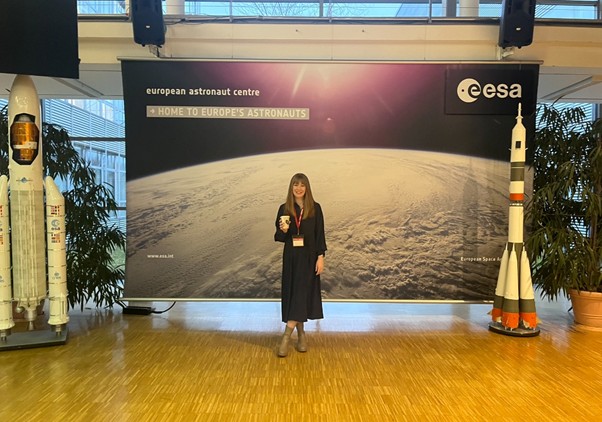
Credits: N. Purvis
The ESA MD selection process is not unlike an astronaut selection – perhaps that is why past Concordia winteroverers (such as Carmen Possnig) have done well in the recent astronaut selection process! First you must meet a set of essential criteria such as qualifications and experience (a medical degree, research experience, space interest or background), then desirable criteria (having lived abroad, speaking other languages, the ability to work in a multicultural and multidisciplinary team, search and rescue operational experience).
The role is multifaceted – you are a crewmember, search and rescue doctor, rescue team leader, water analyst, public speaker, and space medicine researcher. You also need to be in great health, both physically and psychologically, to withstand the isolation and extreme environment – with a barrage of medical tests and psychological interviews to ensure this. After that, when down to the final three candidates, an ESA MD is picked and starts to train for the role. On the way to my in-person interview in Paris, my luggage got lost…and so I had to turn up without my suit I’d picked out and without my preparation notes!

Credits: ESA/IPEV/PNRA-N. Purvis
Over the summer period prior to the mission, I flew to various locations around Europe including ESA sites to meet the research teams who designed the biomedical experiments and to train in the various techniques needed to carry out these projects at Concordia Station, from aliquoting (separating a sample into smaller equal-sized portions) to mindfulness exercises. Other training involved a mountain rescue course in the French Alps, as well as two weeks with the polar institutes learning how to live safely at Concordia Station and to bond as a team before departure.

Credits: ESA/IPEV/PNRA-N. Purvis
Another challenge is what to pack in your canteens for 13 months – and what to take in person as your canteens do not arrive until after Christmas! It turns out, you don’t really need to pack ten perfumes for Antarctica (but the base does smell better for it and it helps with the sensory deprivation). The French polar institute provides extreme cold weather gear, which you pick up in New Zealand on your way to the station.
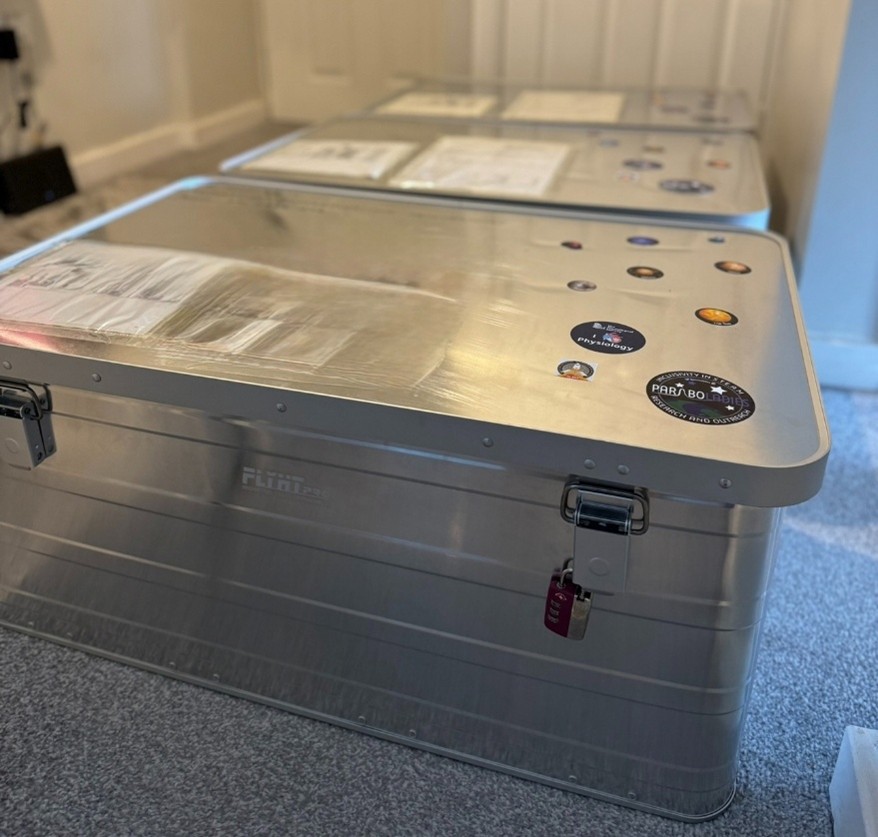
Credits: N. Purvis
And so, I was ready. I paused my surgical residency job in the NHS, packed up and moved out of my apartment, sold my car…and after emotional goodbyes with loved ones, finally the mission started…with the longest travel experience I have ever endured. A flight from England to Paris, then to Singapore, then to New Zealand…a quick rest, then a military plane to the coastal station of Mario Zuchelli (MZS).
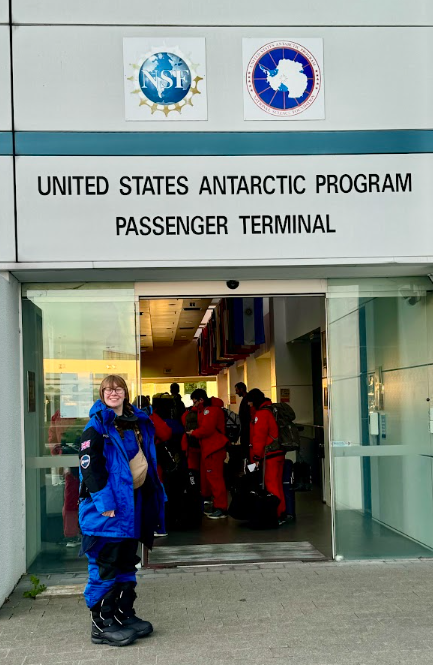
Credit: ESA/IPEV/PNRA-N. Purvis
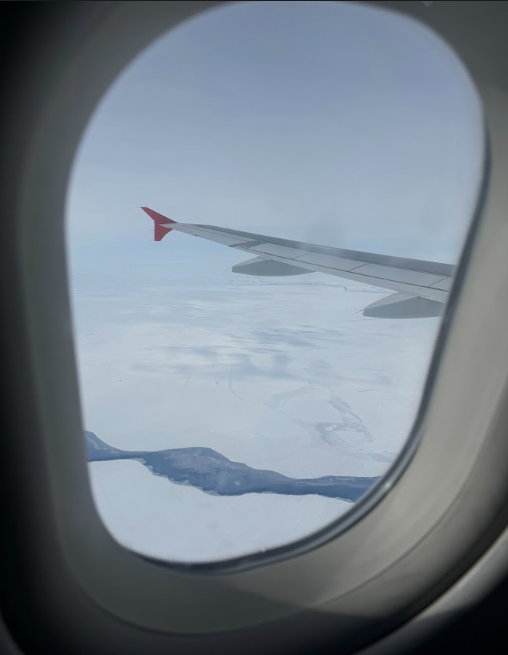
Credit: ESA/IPEV/PNRA-N. Purvis
We stayed at MZS for a few days to wait for an ideal weather window to fly to Concordia station. Of course, in typical ESA MD fashion, I got laryngitis (the ESA MD always gets unwell at some point it seems). I did not explore the coast much, and recuperated in my room, in isolation. Then we took a four-hour flight to Concordia station, where the previous winter-over crew and logistics crew (who arrived a few days prior) met us. It was an incredibly emotional moment. But of course, we have been hypoxic in a non-pressurised cabin for four hours and just landed in a hypoxic environment, so the first few days we were told to rest to prevent acute mountain sickness, and to take in life in the base before we get to work.
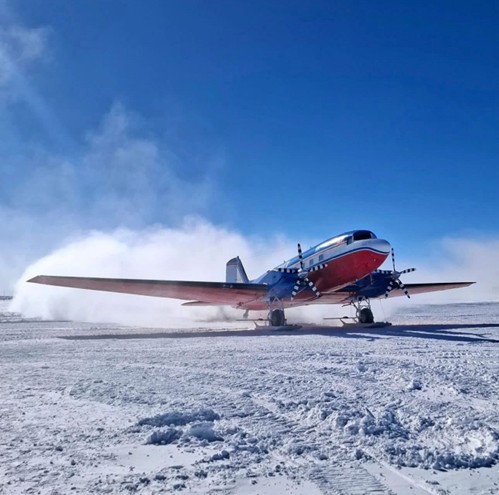
Credits: ESA/IPEV/PNRA-J. Lacrampe/N. Purvis
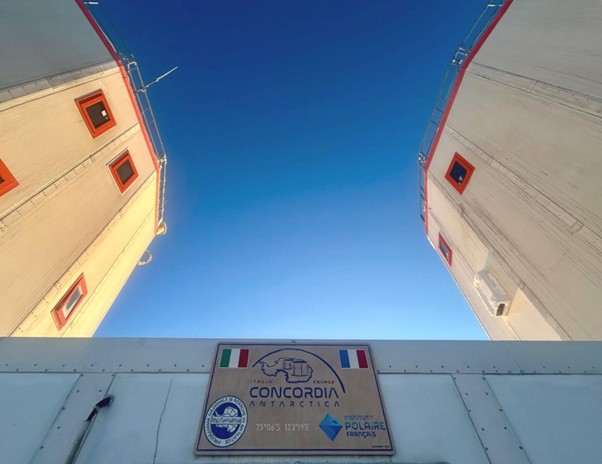
Credits: ESA/IPEV/PNRA-J. Lacrampe/N. Purvis
The summer season is busy – full of learning, adjusting to the way of life and the conditions here, and living in a busy station with a summer crew of up to 80 people. We share rooms, help with food unloading from flights, have weekly talks about the science carried out here, all whilst the sun shines over Concordia 24 hours a day. We have a flag raising ceremony – the British flag was included for me this year, a very proud moment! Christmas Day and New Year’s Eve are celebrated with parties and feasts, and even visitors from the Australian traverse.
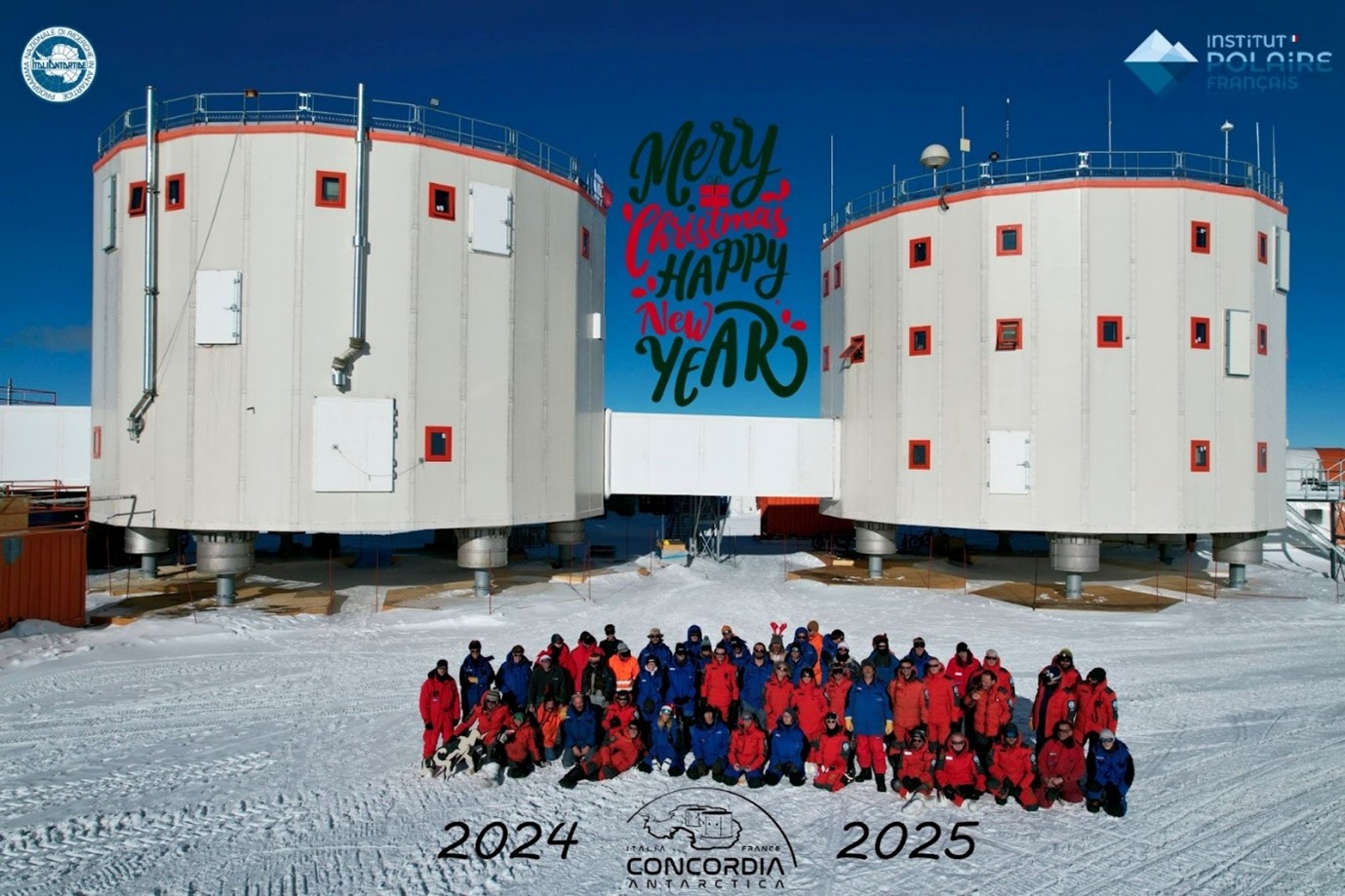
Credits: ESA/IPEV/PNRA-C. Arrat
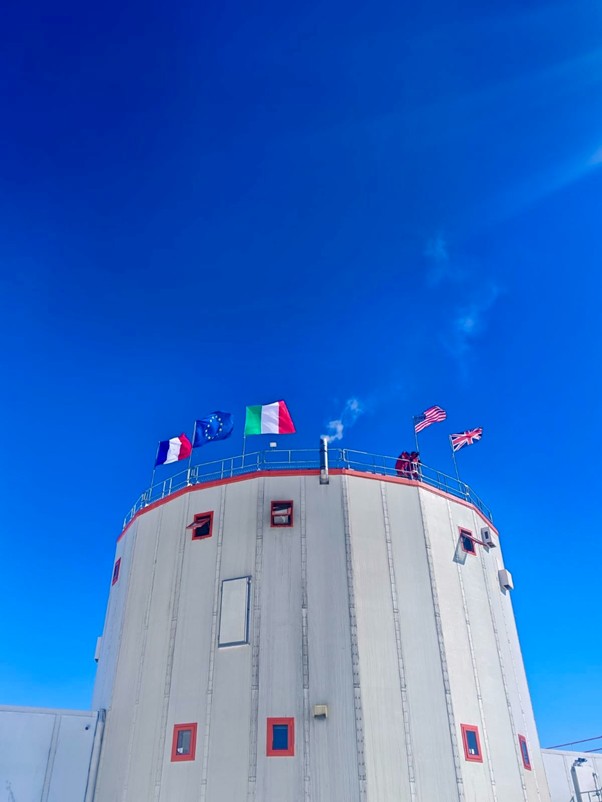
Credits: ESA/IPEV/PNRA-C. Arrat
And then, after the summer work is done, the last plane leaves in February…and there are just 13 of us left until November, adjusting to even more extreme conditions like the extreme cold and autonomy. We see the last sunset in May, giving way to the polar night. For me, this is when my main experiments begin as these are the conditions I came here to study.
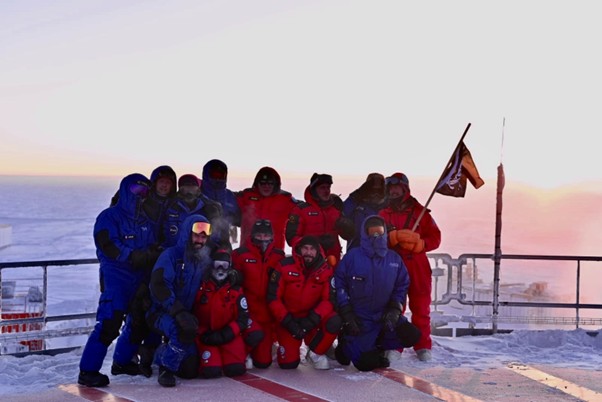
Credits: ESA/IPEV/PNRA-C. Arrat
I’ve accustomed to my life on the ice now – my days are typically spent in the laboratory, running my eight ESA biomedical experiments or testing the recycled water that we wash with and drink here, carrying out crew duties like cleaning, attending set meal times, giving online talks for STEM outreach and to conferences, calling home, hanging out with the crew, and being on call for search and rescue 24/7 to care for the crew who do dangerous jobs outside every day.
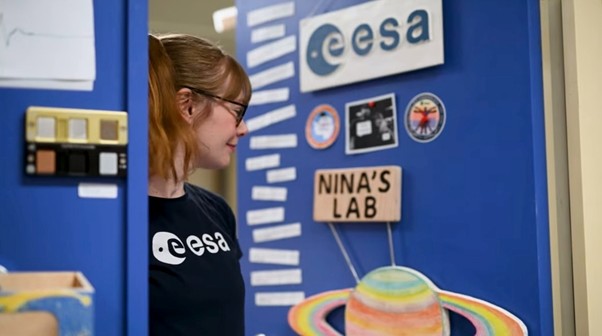
Credits: ESA/IPEV/PNRA-C. Arrat
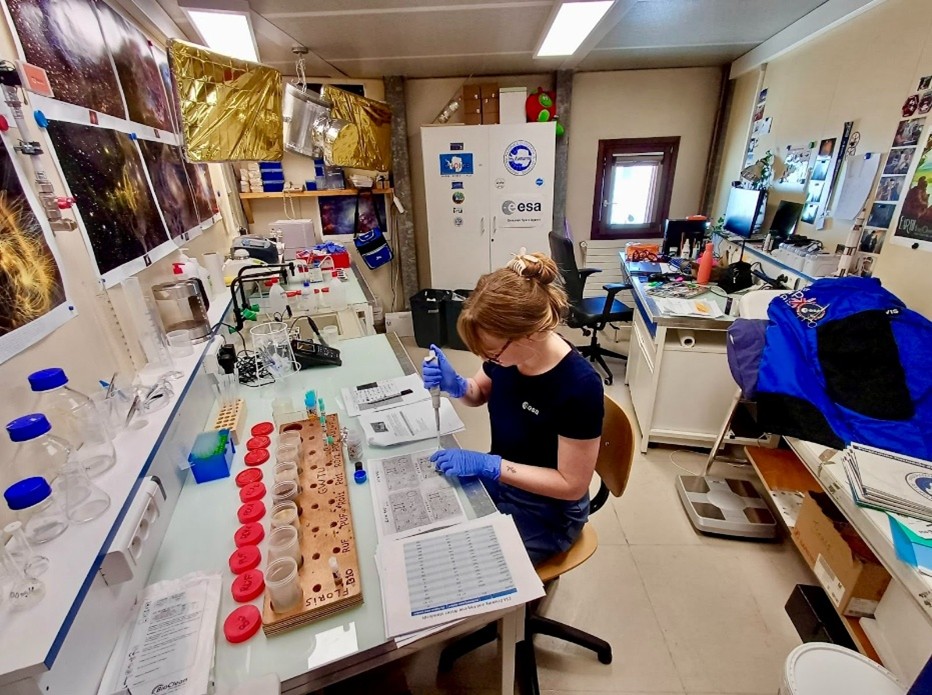
Credits: ESA/IPEV/PNRA-N. Purvis
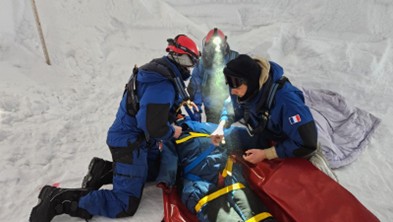
Credits: ESA/IPEV/PNRA-Scipinotti)

Credits: ESA/IPEV/PNRA-Scipinotti)
I reflect back on the process it took to get here. I think about the last 13 months and how much I have been challenged physically, psychologically, socially, intellectually, and on a personal level. This experience is humbling, and it has recalibrated my life outlook for sure.

Credits: ESA/IPEV/PNRA-J. Lacrampe/N. Purvis
In my next blog, I will tell you about the ESA DC21 biomedical research projects and water analysis in more detail, and how this research will help astronauts go to Mars, as well as help patients on Earth…and of course, I will show you the beautiful polar night – the Milky Way and Aurora Australis. Also, some insight into how we as a crew kept busy in our spare time over the winter, including competing in the Antarctic Olympic games (in hypoxia!) and our award-winning film festival entry!





Discussion: one comment
Absolutely brilliant work and very interesting, i can’t wait to read the next one 😀